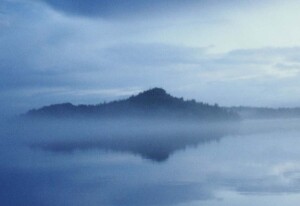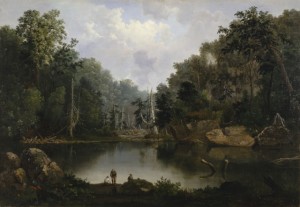- Interview: John Bradshaw, Author Of ‘Cat Sense’ : NPR 090513
Cats have come a long way from being animals charged with catching mice to treasured, adorable creatures that snuggle with us in our beds. But this relatively new arrangement is creating issues for cats and the people who live with them. John Bradshaw has studied the history of domesticated cats and how the relationship between people and cats has changed. He’s the author of the new book Cat Sense: How the New Feline Science Can Make You a Better Friend to Your Pet, which is a follow-up to his book Dog Sense. Bradshaw is the foundation director of the Anthrozoology Institute at the University of Bristol in England. As an anthrozoologist, he studies the interactions between people and animals. He’s also the former science chairman of the International Association of Human-Animal Interaction Organizations. He joins Fresh Air’s Terry Gross to talk about how our relationship with cats has evolved over time and how toning down cats’ hunting instincts will ensure them a future on an increasingly crowded planet.
- Bald Eagles Are Back In A Big Way — And The Talons Are Out : NPR 090413
“It’s a jungle if you’re an eagle right now on the Chesapeake Bay,” says , a conservation biologist at the College of William and Mary in Williamsburg, Va. “You have to watch your back.” Americans have long imagined their national symbol as a solitary, noble bird soaring on majestic wings. The birds are indeed gorgeous and still soar, but the notion that they are loners is outdated, Watts and other conservationists are finding. After nearly being wiped out, inadvertently, by strong insecticides that were in widespread use until the 1970s, bald eagles have come roaring back in places like the James River, south of Richmond, Va. Today the raptors fly around together above the James in big groups, hang out in communal roosts and are fiercely competitive.
- Band Of Ojibwe Begin Occupation Of Penokee Hills | Wisconsin Public Radio News 052913
The Lac Courte Oreilles (LCO) Band of Ojibwe began an occupation in the Penokee Hills this weekend, at a proposed open pit iron ore mine site. The LCO harvest camp is small — five acres as compared to the four and a half miles proposed for the mine here. But LCO tribal elder Melvin Gasper says that this is not just a way to protest the mine plans, but also to get in the way by occupying part of it. Gasper says this is an exercise of their 1842 treaty rights in the Ceded Territory of northern Wisconsin to hunt, fish and gather.
- Climate Change Could Spell Final ‘Chuckle’ For Alpine Frog : NPR 080713
Across the Western U.S., yearly areas of snowpack are decreasing, and researchers are trying to figure out what that means for everything that relies on the snowmelt — from farms to power plants to a little creature known as the Cascades frog. The frog lives way up in the mountains of the Northwest and thrives in alpine wetlands fed by melting snow. Scientists are now trying to figure out how these frogs will adapt to their shrinking habitat. In Washington’s Olympic Mountains things are looking dryer than normal. On a recent day, Maureen Ryan is out looking for the wet spots. She’s a researcher with the University of Washington and an expert on amphibians that live at high elevation. These mountain trails are Ryan’s lab, so to speak. She studies tiny snow-fed potholes of water, cupped in the folds of high mountain ranges in the Northwest, a perfect habitat for Cascades frogs. But as the global climate warms, that habitat is receding.
- The Old Gig: Catching Frogs On Warm Summer Nights : NPR 082313
Bick Boyte plops a 1-pound bullfrog in his aluminum canoe, still half alive. He resumes his kneeling position, perched upfront, on the hunt for a big bellower. Boyte hears the “wom, wom, wom” and knows frogs are within reach. Boyte and Tommy Peebles have been “gigging” Tennessee ponds together since their daddies first taught them. Boyte now owns a truck dealership. Peebles is a real estate lawyer. But in the warm moonlight, they revert to their boyhoods. Peebles does the paddling. The more deadly half of this duo is Boyte. Instead of a paddle, he wields a 12-foot bamboo cane with four barbed tines on the end — his homemade frog gig. On his head, Boyte wears a miner’s headlamp. The light freezes the frogs.
- 7 Day Forecast | Sault Sainte Marie MI
Latitude 46.5°N and Longitude 84.33°W (Elev. 597 ft)
- USGS Multimedia Gallery: (Video)–Whooping Cranes
Whooping crane project at Patuxent National Wildlife health center, with interview of Dr. John French, discussing health, exercises, diet and training of these birds once on the brink of extinction.
About the Ghost Turtles
150 years after Robert Duncanson painted this luminist scene on the Little Miami River, I stood in the same spot and saw a soft-shelled turtle sunning on a snag. It slipped silently into the water when it heard me. That’s when I knew past is present and destiny, too. That’s when my vision of the Ghost Turtles began. Read more
Ecology of the Senses
 Returning to Lake Superior year after year like a migrating loon, I’ve learned the other side of a slow, uncertain process that could be called “going blind.” With the lake as my teacher, I know what lies on the other side. I call it letting go of sight. Read more.
Returning to Lake Superior year after year like a migrating loon, I’ve learned the other side of a slow, uncertain process that could be called “going blind.” With the lake as my teacher, I know what lies on the other side. I call it letting go of sight. Read more.Prayer at Big Creek
![Sandhill cranes land on Platte River sandbar roosts west of Rowe Sanctuary’s Iain Nicolson Audubon Center southwest of Gibbon, Nebraska. [Photo by Lori Porter| Kearney Hub]](https://www.ghostturtles.com/wp-content/uploads/2015/03/sandhill_cranes_kearneyhub_032015-300x225.jpg) At the threshold of consciousness, as I slipped back and forth between two worlds, I put my mind in the best place I could imagine, a marsh on Lake Erie called Big Creek. I knew I’d find cranes waiting for me. I cannot say whether I prayed for them, or to them, or with them. The cant of words doesn’t matter. I believe in the still, small voice. I believe what the poet Yehuda Amichai said. Gods come and go. Prayer is eternal. Read more
At the threshold of consciousness, as I slipped back and forth between two worlds, I put my mind in the best place I could imagine, a marsh on Lake Erie called Big Creek. I knew I’d find cranes waiting for me. I cannot say whether I prayed for them, or to them, or with them. The cant of words doesn’t matter. I believe in the still, small voice. I believe what the poet Yehuda Amichai said. Gods come and go. Prayer is eternal. Read moreFreedom to Read
![An endangered Whooping crane takes flight. Yhe large bird has a 7-foot wingspan. It is all white except for black wing tips and face markings. In this photo its long neck stretches forward; its wings sweep upward; and its black legs trail straight behind it. [Source: International Crane Foundation]](https://www.ghostturtles.com/wp-content/uploads/2023/03/Whooping-crane-eastern-ICF-080622-300x157.jpg) Whenever I hear sanctimonious pronouncements about woke, parental rights, and banning books, I think of Whooping cranes. In my family, the gawky, audacious, elusive and endangered birds are synonymous with our values about the First Amendment and the freedom to read. Read more.
Whenever I hear sanctimonious pronouncements about woke, parental rights, and banning books, I think of Whooping cranes. In my family, the gawky, audacious, elusive and endangered birds are synonymous with our values about the First Amendment and the freedom to read. Read more.Sister, Teacher, Pathfinder
 A guidance counselor in high school told my sister Diana, “With your eye problems you will never make it in college. Just forget about it. Get married. Raise a family.” That advice only deepened her determination. She did it all in due time, in her own way –college, marriage, family. She became a guidance counselor herself. She certainly was the most important guide and pathfinder in my life. Read more.
A guidance counselor in high school told my sister Diana, “With your eye problems you will never make it in college. Just forget about it. Get married. Raise a family.” That advice only deepened her determination. She did it all in due time, in her own way –college, marriage, family. She became a guidance counselor herself. She certainly was the most important guide and pathfinder in my life. Read more.Flaneur & Bouquiniste
![Mark Willis peruses a 1745 volume by Voltaire at a bouquiniste book stall on the banks of the Seine in Paris. He wears a brown leather jacket and checkered flat cap. He holds the open book in his hands. Rows of old books are seen on shelves behind him. [2005 photo by Ms. Modigliani]](https://www.ghostturtles.com/wp-content/uploads/2023/03/mw_bouquiniste_05-300x225.jpg) I remember the book I held in my hands that day. I remember the feel of its time-warped, water-stained pages. I remember its murky, moldy river smell, call it the book’s bouquet, suggesting years of storage on the banks of the Seine. Had I bought it then, I could feel and smell it now and know it from a hundred other books in my library. Read more.
I remember the book I held in my hands that day. I remember the feel of its time-warped, water-stained pages. I remember its murky, moldy river smell, call it the book’s bouquet, suggesting years of storage on the banks of the Seine. Had I bought it then, I could feel and smell it now and know it from a hundred other books in my library. Read more.R & K: A Rant
 Marjorie Taylor Green auditioned for R&K’s Authoritarian It Girl at the 2023 State of the Union address. She and her Republican colleagues yelled like Tarzan swinging through the trees as they jeered and booed the President’s speech. Read Rants & Kisses.
Marjorie Taylor Green auditioned for R&K’s Authoritarian It Girl at the 2023 State of the Union address. She and her Republican colleagues yelled like Tarzan swinging through the trees as they jeered and booed the President’s speech. Read Rants & Kisses.R & K: A Kiss
 Songs by Burt Bacharach and Hal David. Singers like Dione Warwick and Dusty Springfield. What Do You Get When You Fall in Love? The Look of Love. I Say a Little Prayer. I sit in the car’s back seat and listen. I’m glad it’s dark. I’d be embarrassed if anyone could see the dreamy look on my face. Read Rants & Kisses.
Songs by Burt Bacharach and Hal David. Singers like Dione Warwick and Dusty Springfield. What Do You Get When You Fall in Love? The Look of Love. I Say a Little Prayer. I sit in the car’s back seat and listen. I’m glad it’s dark. I’d be embarrassed if anyone could see the dreamy look on my face. Read Rants & Kisses.

